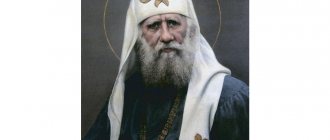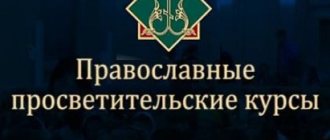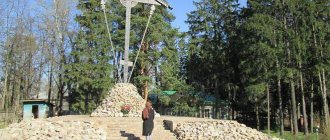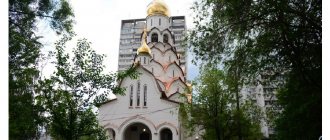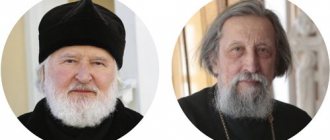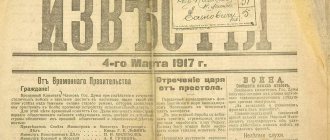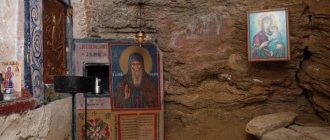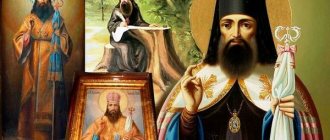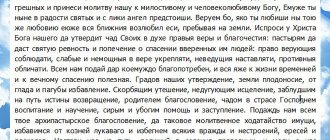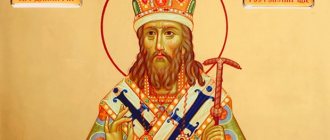Orthodox Life
– Father Damascus, the life of the Church from the first centuries was built on the exploits of martyrs. How does the feat of the new martyrs differ from the feat of the martyrs of the first centuries of Christianity? And how does studying their lives differ from studying the lives of ancient martyrs?
– The feat itself, its qualitative content has not changed in any way; the same Christian with faith in the risen Christ stood before God in ancient times, stood before God in the 20th century. It was not the content of the Christian feat that changed, but the circumstances in which this feat began to be performed. If Christians of the first centuries were persecuted only for the fact that they were Christians, Christianity itself outlawed them, then during the persecution in the twentieth century, Christianity was not declared criminal and worthy of death, as it was in ancient times.
From a Christian in the twentieth century. They did not always demand renunciation of Christ. The main thing has become not who you say you are, but who you really are. You can call yourself a Christian, but not actually be one. Therefore, if the life of the ancient martyrs was considered according to one criterion - their faith in Christ, then the life of those who suffered from the authorities in the 20th century is considered according to many characteristics. And the approach to studying them is personal, that is, we need to study a person’s life in order to understand who is in front of us. The authorities at that time were quite happy with the situation for Christians to be Christians only in name or to secretly help the persecutors. Therefore, in those years, Christians by name could be apostates from the faith, false witnesses against their neighbors and people of a lifestyle unworthy of a Christian. And at the same time, everyone must suffer like many of our glorious martyrs, those for whom there was nothing more precious and beautiful than the Church of Christ. This means that the methodology for studying the lives of martyrs, with church criteria remaining unchanged, has become different.
In the 20th century A political phenomenon that had not existed before - a totalitarian state - appeared on the historical stage. How can you characterize it? The totality and power of state pressure on an individual, when all the material and psychological power organized by the state was used, when in order to break and crush this or that person with an ideology that was hostile, as the authorities considered, all the levers and capabilities of the state machine were used. A church person found himself almost as if in a foreign, some kind of “Babylonian” captivity, but unlike ordinary captivity during interstate wars, he then had nowhere to run except Heaven. Under these conditions, some, in order to save their lives, made a deal with their conscience. Can they be called confessors or martyrs, even though they subsequently suffered a violent death? The feat of the new martyrs also differs in terms of the conditions of the investigative process, which in the twentieth century. in contrast to the open process in ancient times, it was closed from others and is almost inaccessible for full study at the present time, because the body of documents of judicial investigative cases, which is now mainly studied, reflects only part of the life of the injured clergyman or layman, and as part of the information the whole may not be sufficient to reconstruct events. The Church is now accused of allegedly completely trusting everything written in the interrogation reports of the accused.
However, it is not. Everyone understands perfectly well that people at that time were falsely accused of crimes that were not committed. And in this case, it is not the accusation itself that is important, but the position of the accused in relation to the accusation brought against him. At the Councils of Bishops, it was stated with the utmost clarity more than once that there are “no grounds for the canonization of persons who, during the investigation, incriminated themselves or others, causing the arrest, suffering or death of innocent people, despite the fact that they suffered. The cowardice they showed in such circumstances cannot serve as an example, for canonization is evidence of the holiness and courage of the ascetic, which the Church of Christ calls its children to imitate” (see: Report of Metropolitan Juvenaly of Krutitsky and Kolomna, Chairman of the Synodal Commission for the Canonization of Saints, on Bishops' Jubilee Council. M.: Cathedral of Christ the Savior, August 13–16, 2000).
There were cases when people who found themselves face to face with persecutors bore false witness, betrayed their souls, and under pressure from investigators signed texts that they would never have signed under other circumstances. They say that the investigators had methods of influence, torture, etc. But this objection is beyond criticism, because in this case we are not talking about people in general, but about holy martyrs, not in general about unjust victims, but about those whose behavior in the face death was flawless in every way. A reference to the conditions of the investigation of the twentieth century, making perjury excusable, would mean a change in the canonization criteria accepted by the Church, which always considered the merits of the martyr’s feat and did not seek justification for sin in the severity of torture, under which moral and religious principles could be abandoned.
Worship cross in Butovo
We can only call those who are glorified by the Russian Orthodox Church new martyrs. In accordance with the decision of the Holy Synod of February 16, 1999, we call only those glorified by the Church holy martyrs; the names of the rest, Thou, Lord, weigh. This formula and the non-inclusion of those not glorified by name in the list of new martyrs allows, in accordance with the definition of the Holy Synod, “to exclude from the rank of veneration those who died outside the Orthodox Church, having fallen away from it due to a church schism, or because of betrayal, or for non-church reasons” ( Canonization of saints in the twentieth century. M., 1999). So it would be a mistake to call those who suffered but were not glorified by the Church as new martyrs.
– What did the new martyrs and confessors of the Russian Church have to renounce in the first place for the sake of fidelity to Christ, what deprivations did they accept in life?
– First of all, in order to avoid persecution during the years of Soviet power, believers had to hide the fact that they were believers. In those years, if a person remained faithful to Christ, he could lose his job and generally be left without a livelihood, he could be arrested, imprisoned or sent into exile. Persecution concerned not only adult family members, but also children, who could be persecuted in schools for wearing a cross or for attending religious services. Accordingly, parents have always lived under the threat of deprivation of parental rights for raising children in a religious spirit. A believer should have been ready at that time to lose everything, but not be ashamed of Christ and His words.
– During the years of persecution of the Orthodox Church in the country, there was, as we would now say, a family crisis: the official policy of the godless government inculcated the cult of worship of material wealth, imposed freedom of relationships for spouses, public education of children according to standard state programs, which were based on the principles of godlessness and depersonalization. Today we are reaping the bitter fruits of the experiments of the Soviet regime. Can the life experience of the new martyrs and confessors of the Russian Church help modern spouses in resisting this external pressure, as well as in raising children?
– For a family to be able to resist modern temptations, the family itself must be Christian. Modern temptations can only be countered by a different content of life - Christian content. One must, first of all, be a Christian, and then the temptations of this world will not touch a person’s soul. The experience of the new martyrs clearly testifies to this. At that time, many Christian families of laity and clergy were not afraid of anything, well understanding that their only strong support in this life was the Christian faith. In this sense, modern man is not so much seduced by the world as he is seduced himself, often looking for temptations himself and not looking for how and with what to spiritually feed his soul in order to save it.
Going through the family field requires a lot of effort from a person; without exaggeration, we can say that this is a feat. The Church symbolizes marriage with martyr's crowns, bestowing grace-filled strength on the spouses so that for the worthy and ascetic bearing of this cross on earth they will be crowned in the Kingdom of Heaven.
Arrival at the elephant
An example of family life was, for example, the Hieromartyr Tikhon and his wife, confessor Chionia, of Arkhangelsk, glorified in the Council of New Martyrs and Confessors of the Russian Church. They lived in the Voronezh region, where Father Tikhon served as a priest. They had 18 children. The couple raised their children without being embarrassed by poverty, teaching their children to do all kinds of work, which helped them subsequently survive many hardships.
The mother, Khionia Ivanovna, was involved in raising the children. She taught the children to pray and to turn to God in all difficulties. On all major and minor church holidays, the children went to church with her. She taught them to fast in accordance with church regulations. During Lent, the reading of secular books was postponed and the Law of God was read. The children retold what they read to their father or mother. Since there was little free time from work then, they retold the story while they were working - in the garden, in the field, or doing handicrafts.
On August 9, 1937, Father Tikhon was arrested. “Are there any weapons?” – the NKVD officer asked him. “There is,” answered the priest, “the cross and prayer!” Archpriest Tikhon Arkhangelsky was executed on October 17, 1937. Before the execution, the executioner asked him: “Will you not renounce?” - “No, I won’t renounce!” - answered the priest.
On December 12, 1937, authorities arrested Khionia Ivanovna. A few days later, the courageous confessor wrote to the children from prison: “My dear children, I’ve been in a cage for three days, but I think it’s an eternity. There was no formal interrogation yet, but they asked if I believed that God saved the Jews by drowning the Pharaoh in the sea, I said: I believe, and for this they called me a Trotskyist, who need to be destroyed as enemies of the Soviet regime... God bless you and Him Most Pure Mother..."
On December 31, 1937, the NKVD troika sentenced Khionia Ivanovna to eight years in prison. Khionia Ivanovna died in December 1945, becoming, together with her husband, Hieromartyr Tikhon, a Christian example of raising children and a prayer book for all those striving for a pious family life.
– To endure interrogations and torture in dungeons was beyond human strength. What helped the new martyrs to remain faithful to the gospel truth to the end and at the same time preserve human dignity?
Lights of Russia of the 20th century
– For the new martyrs, the trials that came became an exam that they passed to God, who was gracious to them. The main difficulty and sorrow of the martyrs of the twentieth century was not in torture, but in the fact that they could not wait out persecution and torment, exile and imprisonment, as happened in ancient times, when all persecution eventually ended and people could again begin to live their usual lives. them with life, almost not pursued. Our new martyrs and confessors had to live under conditions of persecution, imprisonment and exile throughout their lives.
What qualities did they need to endure all this with dignity? First of all, such a very useful virtue for a person as patience. “Through your patience save your souls... He who endures to the end will be saved,” says the Lord. This virtue, growing, helped the martyr to see the Providence of God in his life, the active participation of God in it, which in itself strengthened his spiritual strength. The second thing that helped to endure trials and at the same time was the fruit of patience shown in trials was the deepest Christian humility. It was this main virtue that suffering taught; thanks to this divine virtue, the martyrs were able to endure all the trials.
For the new martyrs and confessors, the persecution that befell them in the twentieth century was not a factor of external violence. For them, these were circumstances in which the Lord placed them not only to suffer, but also to live. And what could be more comforting for the new martyrs and confessors than to know that the Lord is always with them - both in a prison cell and behind the barbed wire of a concentration camp.
“Are you asking when my torment will end? – Hieromartyr Hilarion (Troitsky) wrote from prison. – I will answer this way: I do not recognize torment and do not suffer. With my “experience”… you won’t surprise or frighten me with prison. I’m already used to not sitting, but living in prison...”
– You have taken upon yourself the extraordinary work of studying the feat of the new martyrs and confessors of the Russian Church and compiling complete biographies. What inspired you to do this and what is your current job?
– Of course, first of all, there is a duty to the Church, an awareness of the need for this to be done, and the fact that this can be accomplished within a certain time frame. There are things that can be done either now, or already, at least in the proper volumes, that will be difficult to do ever. Lives are written on the basis of research in various archival funds, and the methodology for researching and writing the lives of new martyrs is similar to how the lives of ancient martyrs were written.
DAMASCINE
(Kononov Damian; Oct. 22, 1795, village of Repenki (Repinka) Staritsky district, Tver province - Jan. 23, 1881, Spaso-Preobrazhensky Valaam men's monastery), abbot. Valaam Monastery. In 1817 he made pilgrimages, including to the Solovetsky Monastery, the Andrusov Hermitage and the Spaso-Preobrazhensky Valaam Monastery. In July 1819 he entered the Valaam Monastery, September 10. In 1820 he was designated a novice: he was a groom, a baker, and from 1822 a worker's contractor, a guard of the island's monastery property. Since 1820, Elder Euthymius (Ushakov [Ushtovsky]) was D. Kononov’s mentor. On Christmas Day 1823 Abbot. Innokenty (Moruev) was tonsured into the ryassophore, December 12. 1825 Treasurer Rev. Arseny - to monasticism. Since 1826, D. lived in the monastery of All Saints, from July 1, 1827, in a secluded desert (later the monastery in honor of the Konevskaya Icon of the Mother of God), for some time he labored as priest. Amfilohiy (Brelikhov). Every day the cook left a piece of bread at the door of D.’s cell, which the hermit ate with water. He wore chains, did handicrafts, carved wooden spoons, and copied books.
Igum. Damascene (Kononov). Portrait. Last Thursday XIX century (New Valaam Monastery, Finland) Igum. Damascene (Kononov). Portrait. Last Thursday XIX century (New Valaam Monastery, Finland) April 30 1833 D. was appointed head of the monastery in the name of All Saints. On Nov. 1838 by the dean of Mon-Rei of the St. Petersburg diocese, archim. St. Ignatius (Brianchaninov) summoned him to the capital on December 4. 1838 by Bishop of Revel. Venedict (Grigorovich) ordained to the rank of deacon, December 7. the same year he became a hieromonk. 30 Jan 1839 on the proposal of Archimandrite. Ignatius (Brianchaninov) in the Peter and Paul Cathedral of St. Petersburg, D. was elevated to the rank of abbot and awarded with a gaiter and a club; 14 Feb (according to other sources, February 11) of the same year he was confirmed as rector of the Valaam Monastery. From March 22, 1879, the dean of Konevetsky in honor of the Nativity of the Most Rev. Our Lady of the Monastery.
Through D.’s efforts, an exemplary monastery residence was organized on Valaam. Archim. Ignatius (Brianchaninov), who visited the monastery before D.’s abbot, wrote that “the cells in the monastery are unusually thin and unhealthy, I have never seen anything like them in any Russian monastery,” and suggested that the abbot “rebuild them according to the model of the cells of the Optina monastery.” Under D., a temple and new stone cells were erected in the All Saints Skete, and monasteries were built: Nikolsky on Krestovy Island with a church. St. Nicholas the Wonderworker (1853), a 2-story cell building was built (1858) with a house center. St. John of Damascus (1865); Svyatoostrovsky on Saint Island with c. in the name of St. Alexander Svirsky and cell buildings (1855); Predtechensky on Sernichan Island (Monasheskoye, now Predtechensky) with c. in the name of John the Baptist and the Three Saints and cell corps; Ilyinsky on the island of the same name with a c. in the name of the prophet Elijah and cell buildings (1867); Konevsky with c. in honor of the Konevskaya Icon of the Mother of God (1870); Avraamievsky on Emelyanovsky Island with c. in the name of St. Abraham of Rostov (1873).
With the support of Archimandrite Ignatius D. also established the internal life of the desert dwellers and the monastery brethren. In 1838, Archimandrite. Ignatius wrote to D. that in the Valaam deserts “the spirit of arbitrariness reigns... among the hermits there is not a single skilled person.” On the advice of Archimandrite Ignatius, desert habitation on Valaam was abolished, and hermits moved to monasteries, “so that the elders would be silent in twos and threes, and not at all alone.” This measure was also connected with the development of shipping: numerous pilgrims disturbed the silence of the hermits. However, the situation was complicated by the presence of delinquent monks living in the monasteries, who caused confusion and often wrote denunciations against the abbot to the St. Petersburg Metropolis. With the assistance of Archimandrite Ignatius in 1857, the “rebels” were transferred from Valaam. D.'s organization of hermitage life on Valaam pleased Archimandrite so much. Ignatius (Brianchaninov), which is in the middle. XIX century he repeatedly asked the St. Petersburg Metropolitan. Nikandra permission to retire and live on Valaam.
D. is rightly called “the builder of Valaam.” In the Valaam monastery itself, a stone 2-story hotel (1852), a hospice house (1856), a water supply house with workshops and household services (1863), a workhouse and a stable house (1871), a c. in the name of All Reverend Fathers, who shone forth in feat (1876), and materials were also prepared for the construction of a new cathedral. Around the monastery at D., a stone barn with 2 drying kilns and an extensive threshing floor with a threshing machine, a meager (pottery), brick and tar factories were built. In the city of Serdobol (now Sortavala) a monastery courtyard was established (1858), 18 chapels and 10 worship crosses were erected on the island. Under D. mon-ryu, tenement houses in Moscow and Novgorod were donated, acquired into the property of the mon-ryu and approved by decree of the emperor. Alexander II (Aug. 28, 1878) on the islands of Syuskyujansaari (St. Herman), Puutsaari (St. Sergius), Vossinansaari (Voshchanoy, from the end of the 19th century - Tikhvinsky), Yalayansaari (Migorka), Mökerikkö (Elay).
Igum. Damascene (Kononov). Portrait. 70s XIX century (New Valaam Monastery, Finland)
Igum. Damascene (Kononov). Portrait. 70s XIX century (New Valaam Monastery, Finland) Under D., horticulture and vegetable gardening developed on Valaam, the Middle orchards with 97 varieties of apple trees and the Nizhny (Gavrilovsky) orchard were founded. gardens in hermitages. In 1861 in St. Petersburg, at the autumn exhibition of fruits and vegetables, the monastery was awarded large and small silver medals. In total, under D., the monastery received 10 large and small silver medals for success in gardening and vegetable gardening. Several were created on the island. nurseries of rare tree species for the North (oak, chestnut, hazelnut, elm, silver and balsam poplar), as well as ornamental shrub species (mock orange, lilac). Afterwards seedlings of these plants were planted throughout the island in the form of alleys. Convenient roads were built on the island, including to fishing grounds.
Under D., meteorological (since 1845) and level-gauge (since 1850) observations were organized, measurements of small lakes of Valaam were established, a water gauge was installed (1859), and expeditionary work (1858-1864) of the Hydrographic Department was supported. Marine Min.
D. was of particular interest in the study of the ancient history of the monastery. In 1858, through the efforts of the abbot from the Vasilyevsky churchyard near St. Ladoga, a wooden church built by Valaam monks in 1611 was moved to Valaam Island, handwritten books of Valaam monks and other relics were acquired. Under D., the library's fund was replenished with a large number of books, both spiritual and dedicated to various branches of farming, and rare manuscripts were purchased. In 1847, 1857, 1864 catalogs of the book collection were compiled.
In the clergy registers of the period of D.'s abbot it is noted that many. monks underwent icon painting obedience, some studied at the Academy of Arts. D. provided patronage to academic artists (among them I. G. Davydov (1852-1853), M. K. Klodt (1857), I. I. Shishkin (1858, 1859, 1860, 1867, 1878), A. V. Gine and P. P. Dzhogin (1858-1859), P. I. Balashov (1859), F. A. Vasilyev (1867), A. I. Kuindzhi (1873).In 1868, the landscape class, the program of which included mandatory work from life on Valaam. D. had close relations with the rector of the Academy of Arts, Prof. F. I. Jordan. D. provided hospitality to writers who captured Valaam in their works: F. I. Tyutchev ( 1850), A. Dumas (1858), A. N. Apukhtin (1866), N. S. Leskov (1872), Vas. I. Nemirovich-Danchenko (1876).
Mon-ry actively helped the surrounding residents with food, clothing, and seeds, regardless of their religion. On July 9, 1868, the highest gratitude was declared for the help of the Finns who were starving in winter and for the assistance of the Directorate of Charity. In 1870 and 1879 D. was thanked by the Synod for donations for the construction of a church in the Megretsky parish of Olonetsky district. and the restoration of Syandemskaya is empty. 2 Nov 1879 in memory of participation in the activities of the Society for the Care of Wounded and Sick Soldiers during the Russian Tour. wars of 1877-1878 D. received the Red Cross sign from the Main Directorate of the Russian Red Cross Society.
Igum. Damascene (Kononov) on his deathbed. 1881 (New Valaam Monastery, Finland)
Igum. Damascene (Kononov) on his deathbed. 1881 (New Valaam Monastery, Finland) Through the works of D., the monastery became known in Russia as one of the most comfortable. The number of brethren increased significantly: in 1852 - 172, in 1881 - 263 people. D. strictly monitored the implementation of the Sarov charter of the monastery. In the monastery, the consumption of wine and tobacco products was prohibited; without the blessing of the abbot, it was forbidden to read books, send and receive letters, receive brethren in the cell, and talk with pilgrims.
Cell D. has always been open to monks and pilgrims. Often D. confessed to the laity, especially took part in the destinies of people who had fallen morally, was condescending towards them, and tried to guide them with love on the true path. He conducted extensive correspondence with monastics (including Archimandrite, then Bishop Ignatius (Brianchaninov)) and laity. Being a supporter of eldership, he made sure that each monk had a spiritual leader; he himself was an elder for the brethren. From among the students of D. later. became elders of the hieroschim. Alexy (Blinov), archimandrite. Agafangel Olonetsky (Amosov). D. acquired the gifts of mental prayer and insight. Eyewitness stories have been preserved about how D.'s presence and his prayer saved them from imminent death.
26 Apr 1847 “for diligently fulfilling the position of rector,” the Synod awarded D. with a golden pectoral cross, October 24. 1856 - bronze pectoral cross on the Vladimir ribbon, September 15. 1859 - bronze medal on St. Andrew's ribbon, June 3, 1859 - gold pectoral cross with chain, April 25 1864 - St. Anne's Order of the 2nd degree.
19 Nov 1871 D. was struck by mild paralysis. After the second stroke (1874), he almost never left his cell. During his ten-year illness, D. amazed those around him with his patience and extreme undemandingness. After his death, for 5 days before burial, D.’s body was in a warm room, but not the slightest smell of decay emanated from it. He was buried at the Igumen cemetery, at the altar of Ts. in the name of All Reverend Fathers, where a granite cross was soon installed. By 2007, D.’s grave was revered by the brethren and pilgrims; through prayers to D., cases of healing from illnesses and assistance in resolving spiritual and life issues were recorded. D. wrote: “You are looking for a word of consolation from me: here is constant consolation, a constant reason for peace - to accept everything that happens to us in life as from the gracious Hand of God. Then there will be no place for sadness or unnecessary care, the believing heart will then always be in joy in the Lord!”
Arch.: Gazette of the monastery for 1880 // AFVM. Va: 43; Correspondence of the abbot. Damascus with different faces for 1859-1879. // Ibid. Dv: 1-17; The case of the election of abbot. Damascene and three brothers of this monastery as full members of the Committee for the Acclimatization of Animals and Plants, 1861, 1862. // Ibid. Ea: 37; Letters to St. Ignatius Brianchaninova Abbot. Damascus // GA Rep. Karelia. F. 762. Op. 1. Unit hr. 2/9.
Works: Correspondence of A. Kh. Vostokov with the abbot. Damascene // COLLECTION. 1873. T. 5. Issue. 2. P. 389-392; The remarkable life and work of the abbot of the Valaam Monastery. Damascene and his instructive words. St. Petersburg, 19042; Elderly councils of certain domestic ascetics of piety in the 18th-19th centuries. M., 1994. Part 1. pp. 280-296.
Lit.: Panteleimon (Sarkho), Hierom. Igum. Valaam monastery Damascene (1795-1881) and his epistolary heritage: Course. op. / LDA. [L.,] 1977. Rkp.; Valaam Patericon. St. Petersburg; M., 2001. T. 1. P. 5-82; Konyaev N. Apostolic bell: A story about the Valaam monastery, its antiquities and shrines. St. Petersburg, 2003; Valaam Monastery and its devotees. St. Petersburg, 20054. pp. 245-251; Onuphry (Makhanov), hierodeacon. Pier of solitary prayers. St. Petersburg, 2005. pp. 159-205.
